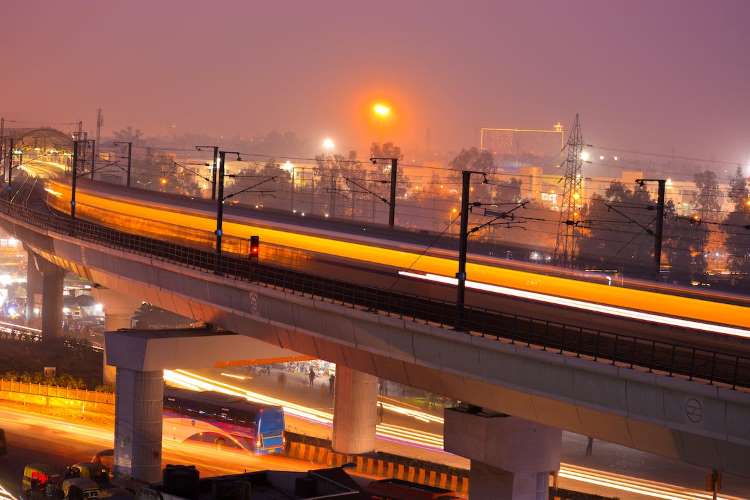India, a country with an ancient history of economic prowess and a contemporary story of rapid growth, stands at a crossroads. The pandemic has undeniably altered the economic landscape, and the resultant increase in government debt has sparked intense debate and introspection about fiscal sustainability. With finance minister Nirmala Sitharaman acknowledging the necessity of debt reduction, there is a need to analyse the reasons behind the rise in public debt and to explore viable solutions.
Since the fiscal shock of 2020-21, the combined debt of Union and state governments has been hovering above 80% of the GDP, with a spike to nearly 90% during the pandemic year. This surge was because of a strategic response to the unprecedented crisis, with the government’s liabilities rising by about 10 percentage points of the GDP. The government’s choice to invest in asset-creating infrastructure as opposed to direct monetary handouts, in contrast to many advanced economies, was a calculated risk to mitigate long-term inflationary pressures and economic stagnation.
Despite the measures taken, the International Monetary Fund forecasts that India’s general debt will not retreat below 80% of GDP until 2028-29. This projection places India in a dichotomous position among the BRICS nations, with countries like Russia and South Africa shouldering less debt in proportion to their GDPs. While China may outstrip India in debt accumulation over the next six years, Brazil continues to bear a higher debt burden since 2019.
READ I What do soaring GST collections in 2023 say about the economy
Approaches to cutting India’s public debt
As India approaches elections, capital expenditure has grown significantly, surpassing budget estimates. However, curtailing revenue expenditure poses a challenge in an election year, often leading to a potential reduction in capex to balance the books. Tax revenue enhancement and GDP growth emerge as the twin pillars for debt reduction.
Some economists like Madan Sabnavis suggest maintaining robust tax collections while being wary of falling short on disinvestment targets, which may affect capex and consequently the fiscal deficit. Diversifying borrowing through small savings schemes is viewed as a strategy to alleviate market pressure, despite the higher costs associated with such instruments.
Union government debt from 2013 to 2023
India government debt to GDP ratio
The growth-debt nexus
It is imperative to understand that India’s public debt is not an isolated phenomenon, but a derivative of various macroeconomic factors. The country’s debt was significantly high even back in 2003-04, and it has increased by only a small margin in recent years. The growth slowdown during the pre-pandemic era and the subdued post-pandemic growth rates contribute significantly to the debt escalation. The golden years of debt decline coincided with the high-growth period between 2004 and 2014, prompting us to introspect on the real issue: the slowdown in GDP growth.
Policy decisions like demonetisation, the hasty implementation of the Goods and Services Tax (GST), and reductions in corporate tax rates have had their repercussions on growth in tax revenue, further straining the debt situation.
Strategic measures for debt reduction
Reducing government debt is not just an act of balancing books but ensuring fiscal health that fosters growth and stability. The following strategic measures could be considered to bring down the debt burden:
- Rationalising tax structures, broadening the tax base, and enhancing compliance could bolster government revenues.
- Optimising government spending through subsidy reforms and better targeting of social programs could reduce wasteful expenditures.
- Strengthening the engines of economic growth through policy reforms, encouraging foreign investment, and bolstering the manufacturing sector could enhance GDP and tax revenues.
- Accelerating disinvestment and asset monetisation could provide immediate fiscal relief and reduce the debt burden.
Strengthening fiscal rules and committing to clear debt and deficit targets can enforce a disciplined approach to fiscal management.
Balancing austerity with growth
India’s journey towards reducing its public debt is akin to walking a tightrope, balancing austerity with the imperative need for growth and development. The task is arduous, requiring a multifaceted approach that addresses both structural and cyclical challenges. While prudent fiscal management is the cornerstone of this journey, it cannot be at the cost of economic growth and development, which remain the ultimate drivers of debt sustainability.
India’s path to fiscal prudence is not through austerity that stunts growth but through strategic investment, inclusive development, and an unwavering commitment to reforms. Only by fostering an environment where the economy can thrive will the spectre of debt be truly exorcised, leaving behind a legacy of sustainable prosperity. The government’s role is pivotal in steering the country towards this eventuality, where the debt burden is not a shackle but a stepping stone towards a brighter economic future.

